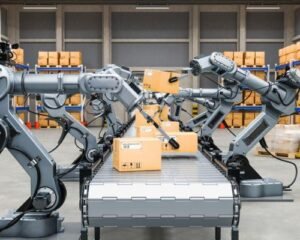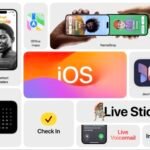OpenAI‘s ChatGPT AI transforms conversations with its human-like comprehension and answers. It is influencing how AI will interact in many domains in the future because of its enormous data training.Businesses like OpenAI and Midjourney create digital chatbots, picture producers, and other artificial intelligence capabilities.
Now, a start-up led by three former OpenAI researchers is developing artificial intelligence (A.I.) technology with the ability to navigate the real world by utilizing chatbot technology.
Robots are being trained by Emeryville, California-based Covariant, a robotics business, to pick up, transport, and sort objects as they are moved through warehouses and distribution facilities. Its objective is to assist robots in comprehending their surroundings and making decisions about their next course of action.
Additionally, the technology enables users to converse with robots as if they were conversing with ChatGPT by endowing them with a broad mastery of the English language.
Though still in its infancy, the technology is far from flawless. However, it is a blatant indication that the same artificial intelligence systems powering chatbots and image generators on the internet will also be powering equipment in homes, warehouses, and streets.
Similar to chatbots and image generators, this robotics technology picks up new abilities through the analysis of massive volumes of digital data. In other words, by continuously providing the system with additional data, engineers may make it better.
With $222 million in capital, Covariant doesn’t make robots. It creates the robots’ operating software. The company wants to employ warehouse robots to implement its new technology, and it hopes to set an example for others to follow in manufacturing facilities and possibly even on autonomous car roads.
Neural networks—so termed after the network of neurons in the brain—are the artificial intelligence (A.I.) systems that power chatbots and image generators.Neural networks—so termed after the network of neurons in the brain—are the artificial intelligence (A.I.) systems that power chatbots and image generators.
These days, businesses are developing systems that can simultaneously learn from several types of data. For example, a system can understand the relationships between a set of photographs and the captions that describe them by evaluating both. It can discover that a yellow fruit with a curve is referred to as a “banana.”
Using that technique, OpenAI created Sora, a new video generator. The algorithm was trained to create videos when given a brief description by examining thousands of captioned films.
The algorithm learnt to create films when given a brief description of a scenario, such as “a gorgeously rendered papercraft world of a coral reef, rife with colorful fish and sea creatures,” by examining thousands of captioned videos.
Similar methods were utilized by Covariant, which was developed by University of California, Berkeley professor Pieter Abbeel and three of his former students, Peter Chen, Rocky Duan, and Tianhao Zhang, to create a system that powers warehouse robots.
The business assists with the operation of sorting robots in warehouses all around the world. It has spent years collecting information about how these robots function from cameras and other sensors.”It absorbs all types of information that robots need to comprehend and engage with the physical world,”Dr. Chen said.
The company has created artificial intelligence (A.I.) technology that provides its robots with a far wider awareness of their surroundings by merging that data with the massive volumes of text required to teach chatbots like ChatGPT.
Once patterns are found in this jumble of text, visuals, and sensory data, the technology enables a robot to deal with unforeseen scenarios in the real world. Even though the robot has never seen a banana before, it is nonetheless capable of picking one up.
It can converse in simple English as well, much like a chatbot. It is aware of what to do when you instruct it to “pick up a banana.” It also understands commands to “pick up a yellow fruit.”It’s even capable of producing videos that foretell what will probably happen when it tries to grab a banana. These films demonstrate the robot’s awareness of its surroundings, although they are of no practical use in a warehouse.





